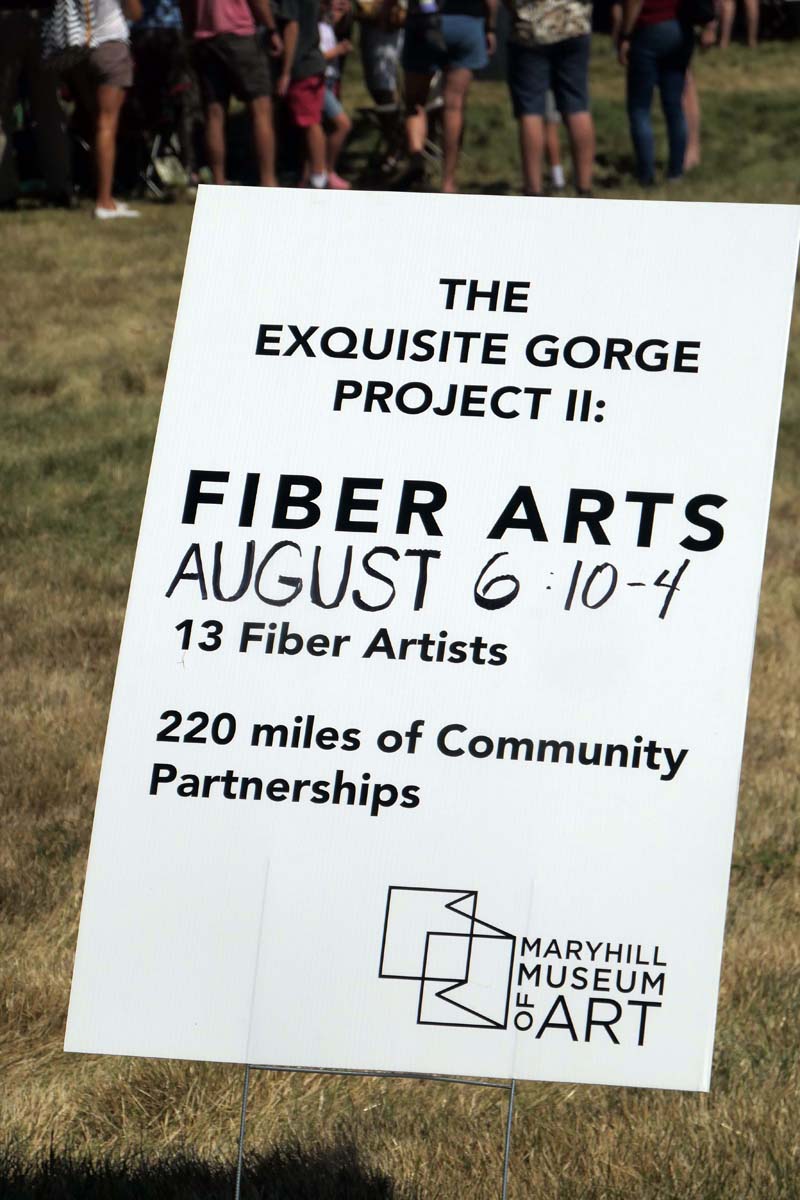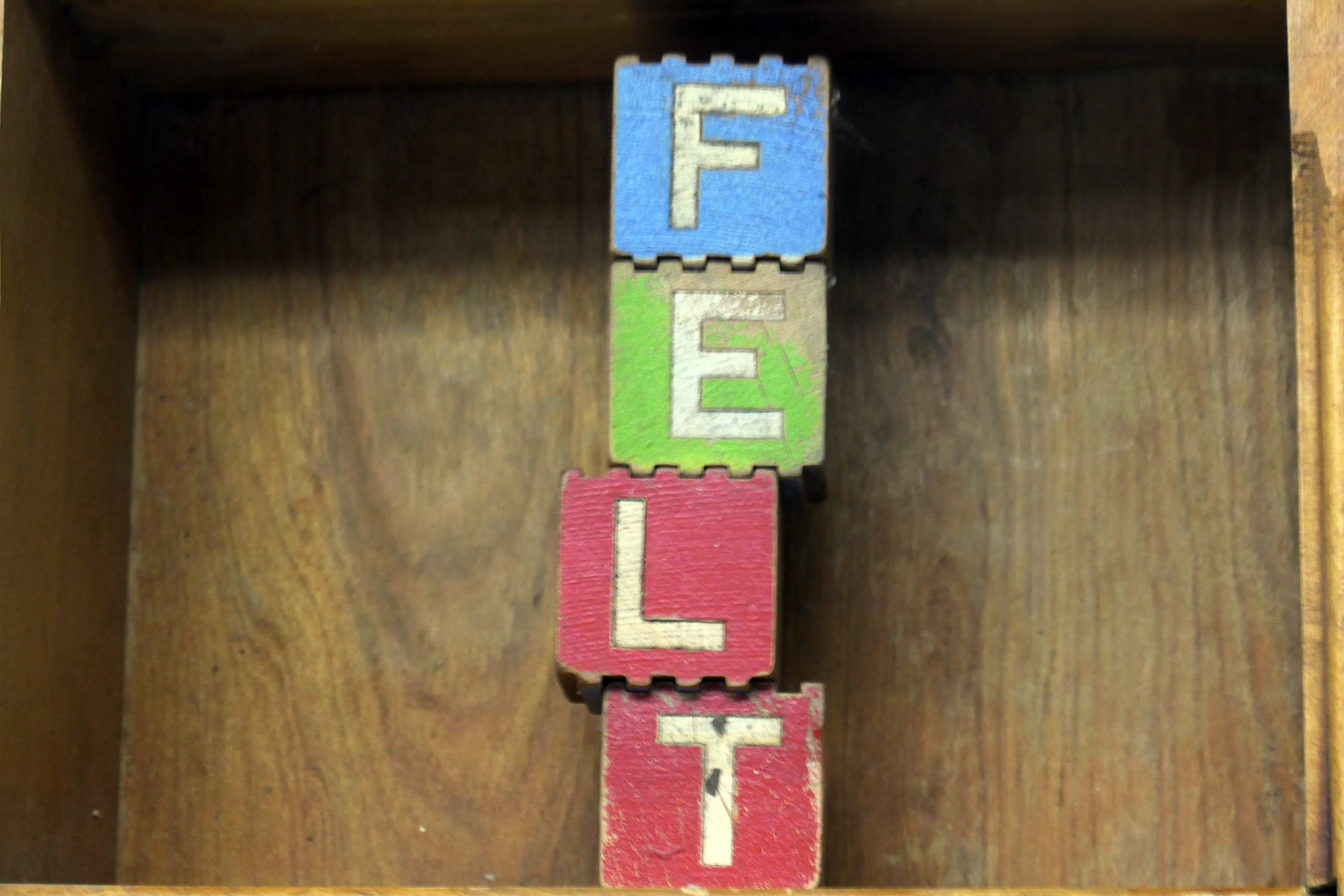It is always bittersweet when a project ends that involved a long-time investment and connected you to many different artists, art works and unusual experiences. I have been following most of the 13 fiber artists of Maryhill Museum’s 2022 Exquisite Gorge II project for almost a year, traveling to their studios and residencies from Ashland to Kennewick, and many places in-between. (Here are all of the profiles that I ended up writing, all in one place.)



Tammy Jo Wilson, Owen Premore, Amanda Triplett with student collaborator.


Bonnie Meltzer, Lynn Deal.



Chloë Hight, Xavier Griffith, Carolyn Hazel Drake and Husband.


Magda Nica, Ophir El-Boher.


Kristy Kún, Francisco and Laura Bautista.
I’ve gotten to know them, admire them, envy them – and most of all I got to think about diverse approaches to create artistic representations of sections of the Columbia River and the Gorge. They were at the heart of the project that connected 11 installations of enormous creative range along the Maryhill Museum Driveway this weekend, a festive celebration by and of community, the many involved area partners to the artists who contributed selflessly and substantially, and the many visitors who came to admire the work.
I also realized how much work is involved behind the scenes, the sweat and labor we never get to experience when we just go and visit an exhibition. There are practical challenges, strokes of bad luck when people are forced to drop out, or promised help fails to materialize. We also do not get to see all the time invested in travel to and from the community partners, the extra cost required by tricky materials, or the realization that some design ideas are brilliant but not able to withstand the weather elements, notoriously fickle in the Gorge.

My fears that the final event after such a long, interesting and difficult run might be anti-climactic were unfounded. It all came together with visible joy and enthusiasm – I will let the photographs (mostly) speak for themselves.

Louise A. Palermo, Curator of Education, was a driving force, in more ways than one. Her connection to and support of the artists and her involvement with the community partners, let alone organizing the technical specs and details of the final event, were moving the project forwards. There was literal driving as well – long stretches to facilitate my visits with the artists, hauling the frames for the installations to and fro, and eventually driving the forklift that brought the finished art works out onto the museum drive.





Multiple volunteers helped in ever so many ways, sustaining the yarn bombing, the poppy project, manning the various booths that helped introduce visitors to different ways of manipulating fibers. At the day of the event, many helpers managed to set the frames in place and secure them on rails that had also been built by friends of the museum.


Cindy Marasco, who saved me from starvation with an ice chest full of goodies, guarded my gear and was all around wonderful to talk to when we hung out in the shade when I had to rest, and her husband Ryan Mooney, who built the tracks.







Chris Pothier and Dylan McManus.
Visitors enjoyed the activities on hand, including a sheep shearing demonstration by M&P Ranches,








Merrit and Pierre Monnat of M&P Ranches
and a story walk created by the Fort Vancouver Regional library and the Klickitat County Book Mobile.



Here are some of the other activities on offer:



















Judy learned felting!
Most of all, however, visitors congregated around the finished installations, admired the incredible range of what was shown, and listened to the individual artists giving short talks explaining their process.

They eagerly photographed the QR Code that linked to detailed information for each piece, clearly engaged.

Many visited the museum itself, at one point in time registering over 350 visitors simultaneously, approaching limitations.




Wilson and Premore Frontispiece, seven crocheted mountains on top of the sturgeon, aquatic plants printed, and quilted fabric from Premore’s grandmothers who lived in the region.

Here are some details from the installations – to experience the full beauty you have to visit yourself – they will be in display for over a month starting now. Or you can take a virtual tour here with a short video produced with the help of canine Daisy…















***
A parade of hats was a feast for the eyes, elegant protection from an increasingly hot sun – remind me to get one of those for future occasions!












with people seeking shade for picnics or the delicious food sold by a Mexican caterer,


and dogs happy when they eventually found some shade as well.
In other words, a great success, for the museum, for the artists, for the many in the community who contributed in so many ways.




It all goes back to the river. The land that has seen hope and heartbreak, new opportunities at the cost of displacement of those long here before colonial settlers arrived. It struggles with fires and floods, with economic inequality, competition for access to ever diminishing resources of water and fish, with questions of what a future might hold and who will be privileged to enjoy that future without having to leave home or traditional vocations. The art installations reminded us of much of that.




Equally so, Saturday’s celebration showed the resilient spirit that unites many of the people of the region: a pride in and connectedness to the river, well aware what an incredible resource it is and how it deserves protection. May art be a guardian of that mission.

Details of work by Meltzer (front) and Kún (back felting.)
Three cheers for an institution – the museum – to help us remember all this through the Exquisite Gorge Projects.
Cant’ wait to see what Exquisite Gorge III will hold.

And next round they WILL head the signs….


THE EXQUISITE GORGE PROJECT II
“…a collaborative fiber arts project featuring 13 artists working with communities along a 220-mile stretch of the Columbia River from the Willamette River confluence to the Snake River confluence. The project, again initiated by Maryhill Museum of Art and following the original one by printmakers in 2019, takes inspiration from the Surrealist art practice known as exquisite corpse. In the most well-known exquisite corpse drawing game, participants took turns creating sections of a body on a piece of paper folded to hide each successive contribution. When unfolded, the whole body is revealed. In the case of The Exquisite Gorge Project II, the Columbia River will become the ‘body’ that unifies the collaboration between artists and communities, revealing a flowing 66-foot work that tells 10 conceptual stories of the Columbia River and its people.”
Section One: Oregon Society of Artists–Artist: Lynn Deal
Section Two: Lewis and Clark College–Artist: Amanda Triplett
Section Three: Columbia Center for the Arts, The History Museum of Hood River County and Arts in Education of the Gorge–Artist: Chloë Hight
Section Four: White Salmon Arts Council and Fort Vancouver Regional Library–Artist: Xavier Griffith
Section Five: The Dalles Arts Center and The Dalles-Wasco County Library–Artists: Francisco and Laura Bautista
Section Six: The Fort Vancouver Regional Library at Goldendale Community Library–Artist: Carolyn Hazel Drake
Section Seven: The American-Romanian Cultural Society and Maryhill Museum of Art–Artist: Magda Nica
Section Eight: Desert Fiber Arts–Artist: Ophir El-Boher
Section Nine: The Confederated Tribes of the Umatilla Indian Reservation–Artist: Bonnie Meltzer
Section Ten: ArtWalla–Artist: Kristy Kún
Frontispiece: Tammy Jo Wilson (project artistic director) and Owen Premore














































